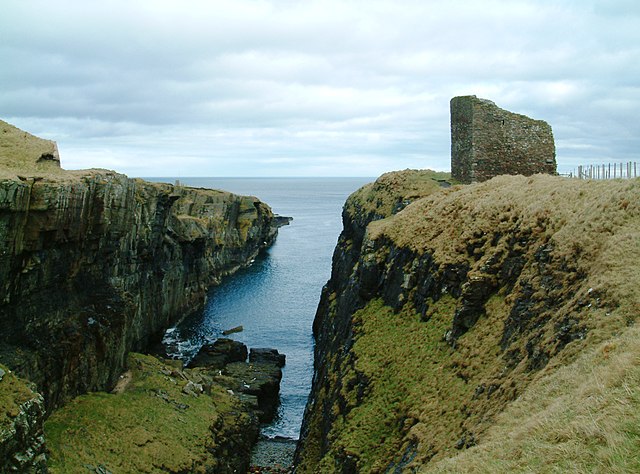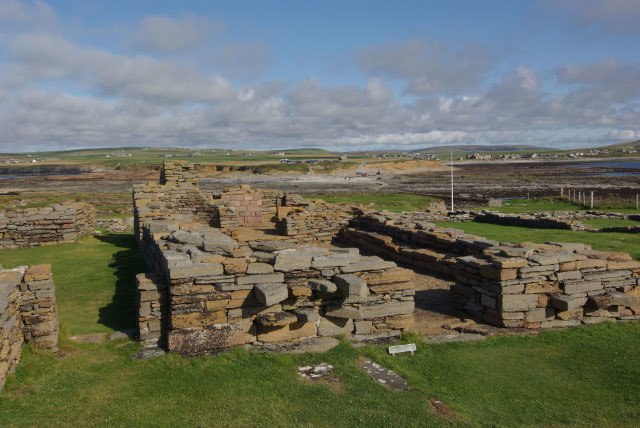The Mormaer of Caithness was a vassal title mostly held by members of the Norwegian nobility based in Orkney from the Viking Age until 1350. The mormaerdom was held as fief of Scotland and the title was frequently held by the Norse Earls of Orkney, who were thus a vassal of both the King of Norway and the King of Scots. There is no other example in the history of either Norway or of Scotland in which a dynasty of earls owed their allegiance to two different kings.
Magnus Barefoot's army in Ireland, as imagined in Gustav Storm's 1899 edition of Heimskringla
The ruins of Braal Castle, the caput of the Caithness mormaers which was given over to the Scottish crown in 1375 by Alexander of Ard.
Ruins of the Castle of Old Wick, a twelfth- or thirteenth-century fortress, which may have been a winter residence of Harald Maddadsson.
Earl of Orkney, historically Jarl of Orkney, is a title of nobility encompassing the archipelagoes of Orkney and Shetland, which comprise the Northern Isles of Scotland. Originally founded by Norse invaders, the status of the rulers of the Northern Isles as Norwegian vassals was formalised in 1195. Although the Old Norse term jarl is etymologically related to "earl", and the jarls were succeeded by earls in the late 15th century, a Norwegian jarl is not the same thing. In the Norse context the distinction between jarls and kings did not become significant until the late 11th century and the early jarls would therefore have had considerable independence of action until that time. The position of Jarl of Orkney was eventually the most senior rank in medieval Norway except for the king himself.
Ruins on the Brough of Birsay, once the seat of the early Norse jarls of Orkney. The Brough is now a tidal islet but in earlier times it was connected to Mainland Orkney by an isthmus.




